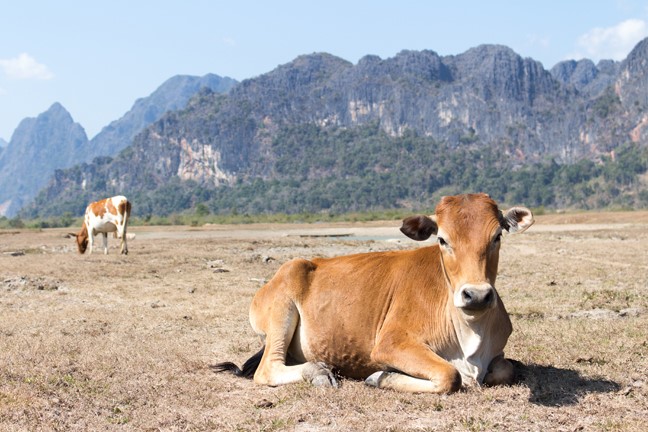Maps of worldwide precipitation trends show impact on pasture and people.
February 21, 2018

The livelihoods and food security of some 800 million people around the world depend on livestock that graze on natural vegetation, according to an announcement from the University of Minnesota.
In a good season, grasses and other plants flourish, supporting robust herds. In a bad season, the system suffers — as do the people who rely on it. One significant and increasingly volatile factor that can make the difference between a good year or a bad year is precipitation.
A new study in Nature Climate Change revealed that over the past century, year-to-year precipitation variability has increased significantly on 49% of the world’s grazing lands, affecting vegetation and constraining its ability to support livestock.
The study’s authors, led by a team from the University of Minnesota Institute on the Environment (IonE), used climate data from 1901 to 2014 to create global maps of precipitation variability trends. While some grazing lands showed decreases in rainfall variability, the overall trend was for an increase in fluctuation both within and between years, IonE said.
“Visualizing precipitation variability trends allows us to identify grazing lands that have undergone large changes — and to learn from those places where people have managed to adapt well despite increased variability,” said lead author Lindsey Sloat, a postdoctoral research associate with IonE’s Global Landscapes Initiative.

The map shows changes in between-year precipitation variability: Of the total land area considered pasture in this analysis, 20% did not experience significant changes (in gray), while 31% experienced significant decreases (cool colors) and 49% experienced significant increases in precipitation variability (warm colors).
This insight is important, because grazing lands are already typically marginal, meaning they are unsuitable for crops because they are either too dry or have poor soils. “Even small changes in rainfall put them at more risk,” added Paul West, co-director of the initiative.
Furthermore, some grazing lands are more inhospitable than others. Changes in precipitation variability especially affect these more vulnerable lands, which — adding to global risk — also tend to be home to the smallholder farmers and pastoralists who most depend on livestock for food, IonE noted. The researchers found:
* Global grazing lands already experience 25% more year-to-year variability in precipitation than the average global surface land area.
* Regions with high year-to-year precipitation variability support lower livestock densities than regions with less variability.
* Overall precipitation variability has increased the most in areas where grazing is predicted to be important for local food access.
“This study is showing us that grazing is potentially highly vulnerable to climate change right across the world, from Australia to Central Asia, sub-Saharan Africa and the Americas,” said co-author Mario Herrero of Australia’s Commonwealth Scientific & Industrial Research Organization (CSIRO).
The research was a collaboration among scientists from IonE, the University of Arizona School of Natural Resources & the Environment, CSIRO and the Federal University of Goias in Brazil.
You May Also Like



